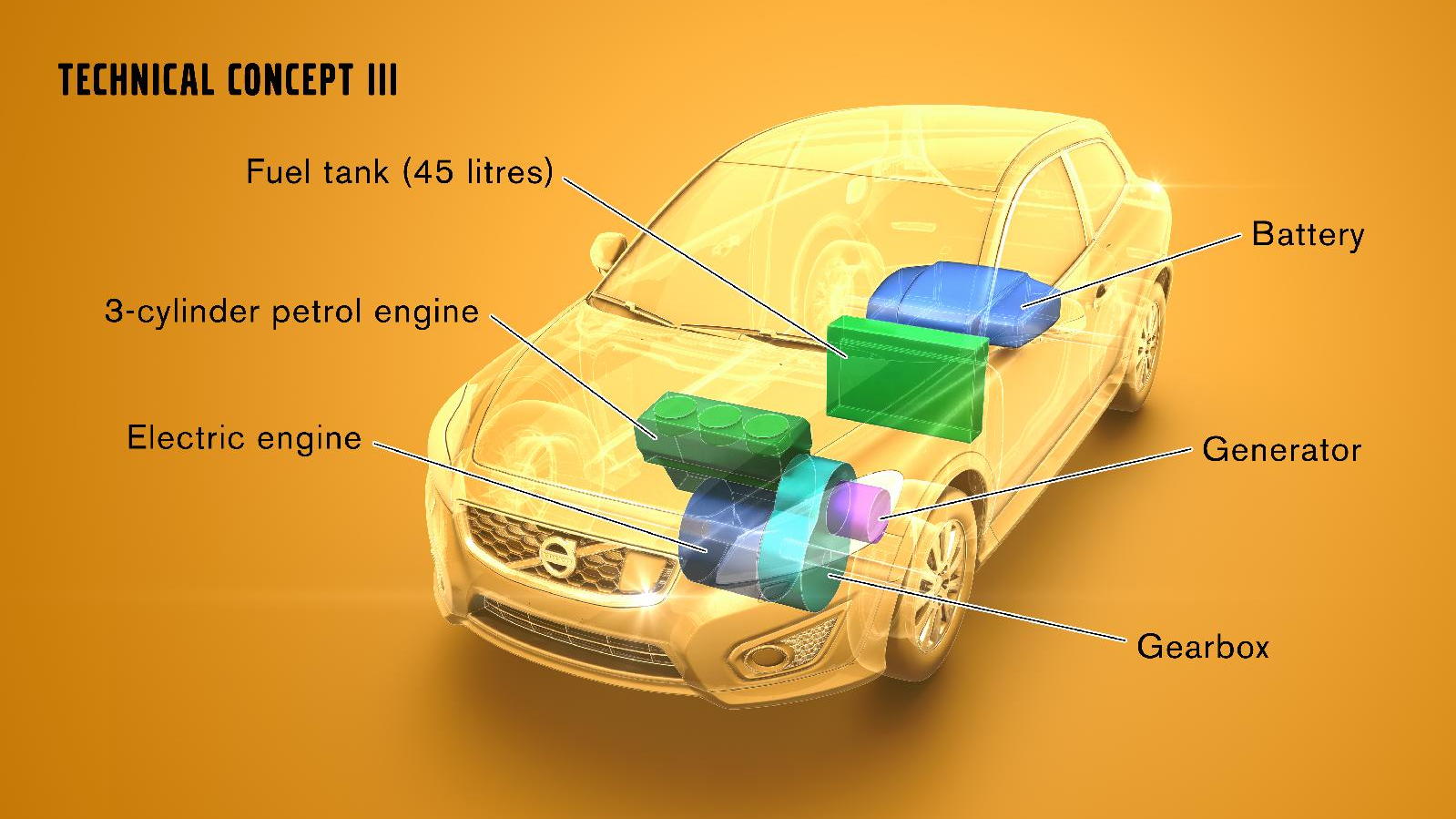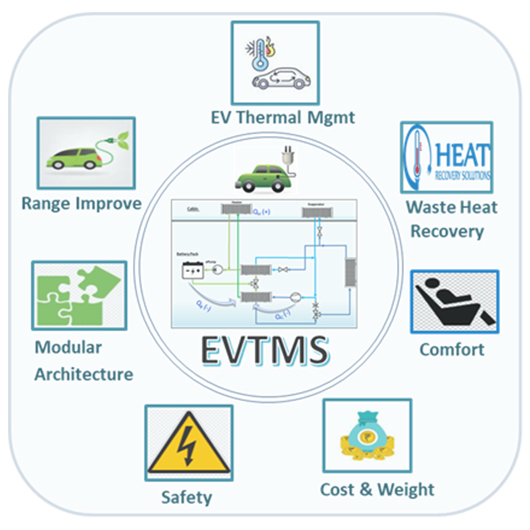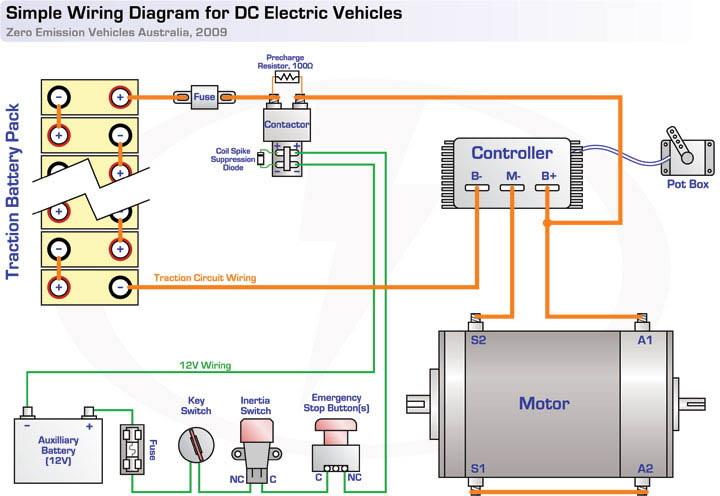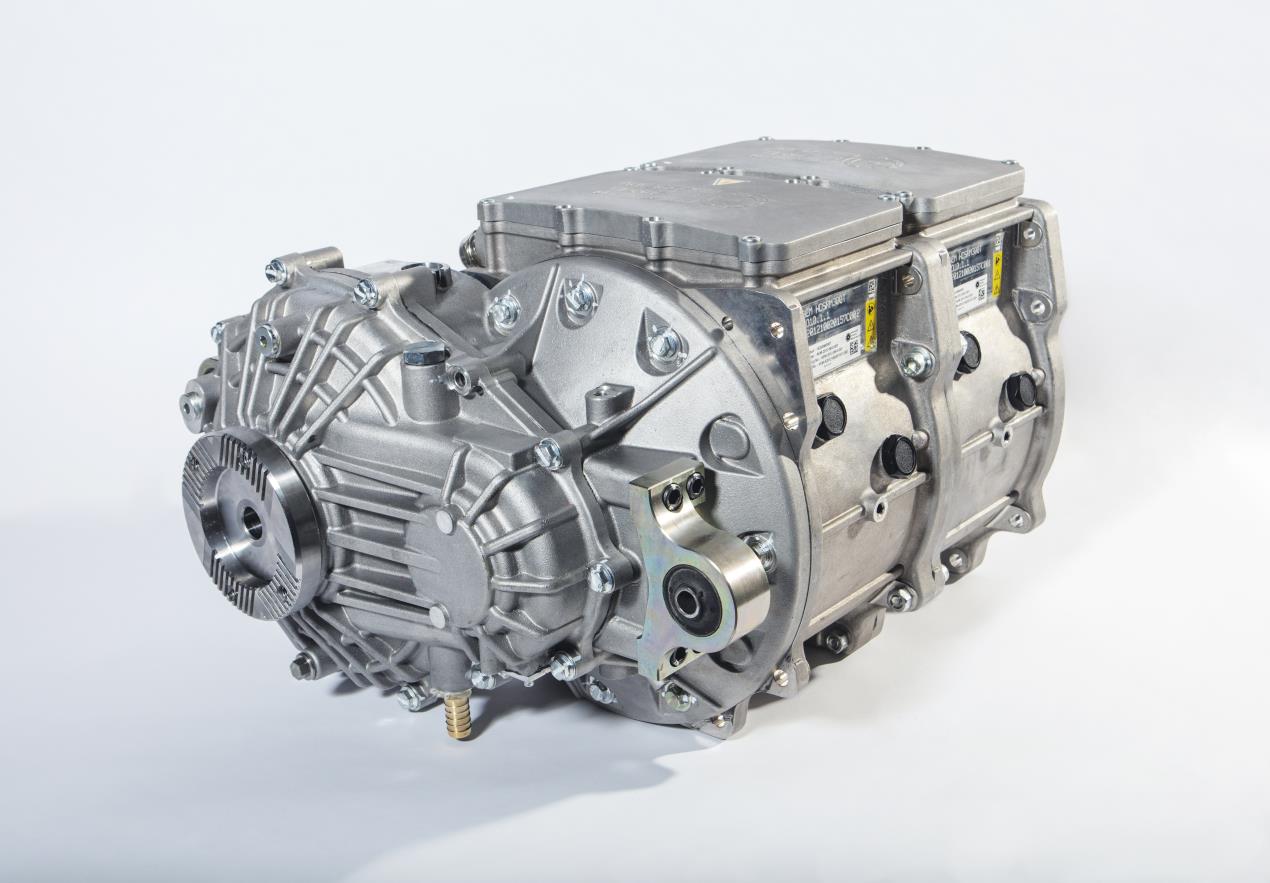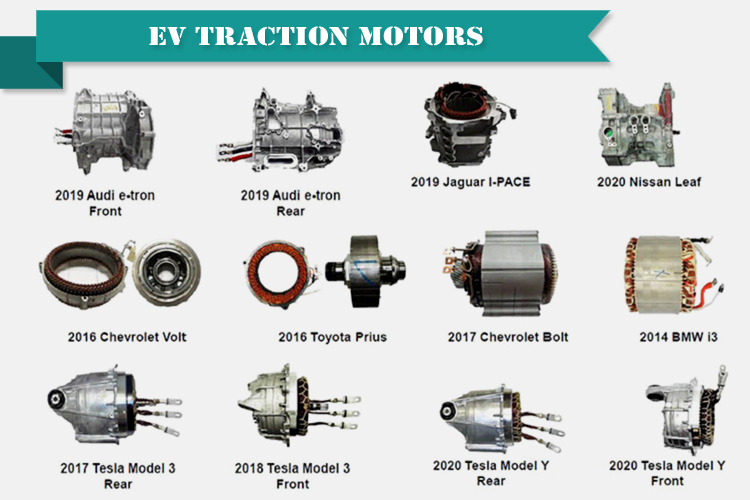Mastering the Fundamentals of Electric Motor Technology
Electric motor technology is a crucial aspect of electric vehicle and electric motor operations management. Understanding the basics of electric motors, including their types, components, and functionality, is essential for optimizing electric vehicle performance. Electric motors are the heart of electric vehicles, converting electrical energy into mechanical energy to propel the vehicle forward. There are several types of electric motors, including permanent magnet motors, induction motors, and switched reluctance motors, each with its unique characteristics and advantages.
The components of an electric motor include the stator, rotor, bearings, and windings. The stator is the stationary part of the motor, while the rotor is the moving part. The bearings support the rotor and allow it to rotate smoothly, while the windings are the copper wires that carry the electrical current. Understanding how these components work together is vital for effective electric vehicle and electric motor operations management.
In the context of electric vehicle and electric motor operations management, understanding electric motor fundamentals is critical for several reasons. Firstly, it enables the identification of potential issues and the implementation of preventive maintenance strategies to prevent motor failure. Secondly, it allows for the optimization of motor performance, efficiency, and reliability, which are essential for extending vehicle life and reducing maintenance costs. Finally, it facilitates the development of advanced motor control systems and thermal management techniques, which are crucial for enhancing vehicle performance, efficiency, and safety.
Furthermore, understanding electric motor fundamentals is also essential for the development of innovative electric vehicle technologies, such as advanced power electronics and battery management systems. By mastering the basics of electric motor technology, electric vehicle manufacturers and operators can unlock new opportunities for improving vehicle performance, reducing emissions, and enhancing the overall driving experience.
In conclusion, mastering the fundamentals of electric motor technology is a critical aspect of electric vehicle and electric motor operations management. By understanding the types, components, and functionality of electric motors, electric vehicle manufacturers and operators can optimize motor performance, efficiency, and reliability, and unlock new opportunities for innovation and growth.
How to Monitor and Maintain Electric Motor Health for Extended Vehicle Life
Regular monitoring and maintenance of electric motors in electric vehicles are crucial for preventing motor failure and extending vehicle life. Effective electric vehicle and electric motor operations management requires a proactive approach to motor health, including routine checks, scheduled maintenance, and prompt repairs. By implementing a comprehensive motor monitoring and maintenance program, electric vehicle manufacturers and operators can minimize downtime, reduce maintenance costs, and optimize vehicle performance.
One of the key aspects of motor monitoring is identifying potential issues before they become major problems. This can be achieved through regular inspections, performance monitoring, and data analysis. Electric vehicle operators should look for signs of motor wear, such as unusual noises, vibrations, or temperature fluctuations, and address these issues promptly. Additionally, motor performance data, such as efficiency, power output, and torque, should be regularly monitored and analyzed to identify trends and anomalies.
Scheduled maintenance is also essential for maintaining electric motor health. This includes routine tasks, such as cleaning, lubricating, and replacing worn or damaged components. Electric vehicle manufacturers and operators should develop a maintenance schedule that takes into account the motor’s operating conditions, usage patterns, and manufacturer recommendations. By staying on top of maintenance, electric vehicle operators can prevent motor failure, reduce downtime, and optimize vehicle performance.
Another critical aspect of motor maintenance is thermal management. Electric motors generate heat during operation, which can impact performance, efficiency, and lifespan. Effective thermal management techniques, such as cooling systems and thermal interface materials, can help to mitigate these effects and maintain optimal motor performance. Electric vehicle manufacturers and operators should consider the thermal management requirements of their motors and implement strategies to maintain optimal operating temperatures.
Finally, electric vehicle manufacturers and operators should prioritize motor repair and replacement when necessary. This includes having a plan in place for prompt repairs, maintaining a stock of spare parts, and having a network of authorized service providers. By prioritizing motor repair and replacement, electric vehicle operators can minimize downtime, reduce maintenance costs, and maintain optimal vehicle performance.
By implementing a comprehensive motor monitoring and maintenance program, electric vehicle manufacturers and operators can optimize electric vehicle and electric motor operations management, minimize downtime, reduce maintenance costs, and extend vehicle life. Regular monitoring, scheduled maintenance, thermal management, and prompt repairs are all critical components of a proactive approach to motor health, and can help to ensure optimal vehicle performance and longevity.
The Role of Power Electronics in Electric Vehicle Motor Operations
Power electronics play a crucial role in electric vehicle motor operations, enabling the efficient and reliable conversion of electrical energy into mechanical energy. In the context of electric vehicle and electric motor operations management, power electronics are responsible for controlling the flow of electrical energy to the motor, optimizing its performance, efficiency, and reliability. The main components of power electronics in electric vehicle motor operations include inverters, converters, and other power electronic devices.
Inverters are a critical component of power electronics in electric vehicle motor operations, responsible for converting DC power from the battery to AC power for the motor. The inverter’s primary function is to optimize motor performance, efficiency, and reliability by controlling the frequency and amplitude of the AC power output. Advanced inverter technologies, such as sinusoidal pulse-width modulation (SPWM) and space vector modulation (SVM), enable the efficient and reliable operation of electric vehicle motors.
Converters are another essential component of power electronics in electric vehicle motor operations, responsible for converting the DC power from the battery to the required voltage and current levels for the motor. The converter’s primary function is to optimize motor performance, efficiency, and reliability by controlling the voltage and current output. Advanced converter technologies, such as DC-DC converters and AC-DC converters, enable the efficient and reliable operation of electric vehicle motors.
Other power electronic devices, such as power factor correction (PFC) circuits and electromagnetic interference (EMI) filters, also play a crucial role in electric vehicle motor operations. PFC circuits optimize the power factor of the motor, reducing energy losses and improving efficiency. EMI filters reduce electromagnetic interference, ensuring the reliable operation of the motor and other electrical systems.
The impact of power electronics on electric vehicle motor operations is significant, enabling the efficient and reliable conversion of electrical energy into mechanical energy. Advanced power electronic technologies, such as wide bandgap (WBG) semiconductors and advanced packaging technologies, are enabling the development of more efficient and reliable power electronic devices. These advancements are critical for optimizing electric vehicle and electric motor operations management, enabling the widespread adoption of electric vehicles and reducing greenhouse gas emissions.
In conclusion, power electronics play a vital role in electric vehicle motor operations, enabling the efficient and reliable conversion of electrical energy into mechanical energy. The main components of power electronics, including inverters, converters, and other power electronic devices, are critical for optimizing motor performance, efficiency, and reliability. Advanced power electronic technologies are enabling the development of more efficient and reliable power electronic devices, optimizing electric vehicle and electric motor operations management.
Electric Vehicle Charging Strategies for Optimal Motor Performance
Electric vehicle charging strategies play a crucial role in optimizing motor performance, battery health, and overall vehicle efficiency. In the context of electric vehicle and electric motor operations management, charging strategies can significantly impact the performance and lifespan of the motor. This article will discuss various electric vehicle charging strategies, including Level 1, Level 2, and DC Fast Charging, and explain how different charging methods impact motor performance, battery health, and overall vehicle efficiency.
Level 1 charging is the slowest and most basic form of electric vehicle charging. It uses a standard 120-volt household outlet and can take up to 24 hours to fully charge a depleted battery. Level 1 charging is suitable for vehicles with small batteries and low power requirements, but it may not be sufficient for vehicles with larger batteries or higher power requirements.
Level 2 charging is a faster and more efficient form of electric vehicle charging. It uses a 240-volt charging station and can charge a depleted battery in 4-8 hours. Level 2 charging is suitable for vehicles with larger batteries and higher power requirements, and it is commonly used in residential and commercial settings.
DC Fast Charging is the fastest form of electric vehicle charging. It uses a high-power charging station and can charge a depleted battery to 80% in just 30 minutes. DC Fast Charging is suitable for vehicles with large batteries and high power requirements, and it is commonly used in high-power applications such as electric buses and trucks.
The impact of charging strategies on motor performance, battery health, and overall vehicle efficiency is significant. Different charging methods can affect the motor’s power output, efficiency, and lifespan, as well as the battery’s state of charge, health, and lifespan. For example, high-power charging methods such as DC Fast Charging can cause the motor to operate at higher temperatures, which can reduce its lifespan. On the other hand, low-power charging methods such as Level 1 charging can cause the motor to operate at lower temperatures, which can extend its lifespan.
In conclusion, electric vehicle charging strategies play a crucial role in optimizing motor performance, battery health, and overall vehicle efficiency. Different charging methods can significantly impact the performance and lifespan of the motor, and it is essential to choose the right charging strategy for the specific application. By understanding the impact of charging strategies on motor performance, battery health, and overall vehicle efficiency, electric vehicle manufacturers and operators can optimize electric vehicle and electric motor operations management, reducing costs and improving performance.
Thermal Management Techniques for Electric Vehicle Motor Operations
Thermal management is a critical aspect of electric vehicle motor operations, as it directly impacts motor performance, efficiency, and lifespan. In the context of electric vehicle and electric motor operations management, thermal management techniques play a crucial role in maintaining optimal motor temperatures, reducing energy losses, and extending motor lifespan. This article will discuss the importance of thermal management in electric vehicle motor operations and introduce various thermal management techniques, such as cooling systems and thermal interface materials.
Temperature is a critical factor in electric vehicle motor operations, as it can significantly impact motor performance, efficiency, and lifespan. High temperatures can cause motor degradation, reduce efficiency, and increase energy losses. On the other hand, low temperatures can improve motor performance, increase efficiency, and reduce energy losses. Therefore, it is essential to maintain optimal motor temperatures to ensure efficient and reliable motor operations.
Cooling systems are a common thermal management technique used in electric vehicle motor operations. These systems use a coolant to absorb heat from the motor and dissipate it to the surroundings. Cooling systems can be classified into two main categories: air-cooled and liquid-cooled systems. Air-cooled systems use air to cool the motor, while liquid-cooled systems use a liquid coolant to cool the motor. Liquid-cooled systems are more efficient and effective than air-cooled systems, but they are also more complex and expensive.
Thermal interface materials (TIMs) are another thermal management technique used in electric vehicle motor operations. TIMs are materials that are used to fill the gap between the motor and the cooling system, ensuring good thermal contact and heat transfer. TIMs can be classified into two main categories: thermal greases and thermal pads. Thermal greases are liquids that are applied to the motor and cooling system, while thermal pads are solid materials that are placed between the motor and cooling system. TIMs can improve motor performance, increase efficiency, and reduce energy losses.
In addition to cooling systems and TIMs, other thermal management techniques can be used in electric vehicle motor operations, such as heat sinks, thermal shields, and thermal insulation. Heat sinks are materials that are used to absorb heat from the motor and dissipate it to the surroundings. Thermal shields are materials that are used to reflect heat away from the motor, reducing heat gain. Thermal insulation is used to reduce heat transfer between the motor and the surroundings, maintaining optimal motor temperatures.
In conclusion, thermal management is a critical aspect of electric vehicle motor operations, and various thermal management techniques can be used to maintain optimal motor temperatures, reduce energy losses, and extend motor lifespan. Cooling systems, TIMs, heat sinks, thermal shields, and thermal insulation are some of the thermal management techniques that can be used in electric vehicle motor operations. By understanding the importance of thermal management and using effective thermal management techniques, electric vehicle manufacturers and operators can optimize electric vehicle and electric motor operations management, reducing costs and improving performance.
Electric Motor Control Systems for Enhanced Vehicle Performance
Electric motor control systems play a crucial role in electric vehicle operations, enabling the efficient and reliable operation of the motor. In the context of electric vehicle and electric motor operations management, advanced control systems can enhance vehicle performance, efficiency, and safety. This article will explain the role of electric motor control systems in electric vehicle operations, including the function of motor controllers, sensors, and software.
Motor controllers are a critical component of electric motor control systems, responsible for regulating the flow of electrical energy to the motor. They use sophisticated algorithms and sensors to optimize motor performance, efficiency, and reliability. Advanced motor controllers can also provide real-time monitoring and diagnostics, enabling the early detection of potential issues and reducing downtime.
Sensors are another essential component of electric motor control systems, providing real-time data on motor performance, temperature, and other critical parameters. They enable the motor controller to make informed decisions about motor operation, optimizing performance and efficiency. Advanced sensors can also provide predictive maintenance capabilities, enabling the early detection of potential issues and reducing downtime.
Software is a critical component of electric motor control systems, enabling the integration of advanced algorithms and sensors. It provides a platform for the development of sophisticated control strategies, optimizing motor performance, efficiency, and reliability. Advanced software can also provide real-time monitoring and diagnostics, enabling the early detection of potential issues and reducing downtime.
Advanced control systems can also provide a range of benefits for electric vehicle operations, including improved vehicle performance, increased efficiency, and enhanced safety. They can also provide real-time monitoring and diagnostics, enabling the early detection of potential issues and reducing downtime. By optimizing motor performance, efficiency, and reliability, advanced control systems can also reduce maintenance costs and extend vehicle lifespan.
In addition to the benefits mentioned above, advanced control systems can also provide a range of innovative features, including regenerative braking, torque vectoring, and advanced driver assistance systems. These features can enhance vehicle performance, efficiency, and safety, providing a competitive advantage for electric vehicle manufacturers and operators.
In conclusion, electric motor control systems play a crucial role in electric vehicle operations, enabling the efficient and reliable operation of the motor. Advanced control systems can enhance vehicle performance, efficiency, and safety, providing a range of benefits for electric vehicle manufacturers and operators. By optimizing motor performance, efficiency, and reliability, advanced control systems can also reduce maintenance costs and extend vehicle lifespan.
Real-World Examples of Electric Vehicle Motor Operations Management in Action
Electric vehicle motor operations management is a critical aspect of ensuring the efficient and reliable operation of electric vehicles. In this article, we will provide real-world examples of electric vehicle motor operations management in action, including case studies of successful implementations and lessons learned. We will also highlight the benefits of effective motor operations management, such as improved vehicle performance, reduced maintenance costs, and extended lifespan.
One example of effective electric vehicle motor operations management is the use of advanced motor control systems. These systems use sophisticated algorithms and sensors to optimize motor performance, efficiency, and reliability. For example, the Tesla Model S uses a advanced motor control system that enables the vehicle to achieve exceptional acceleration and efficiency. The system uses a combination of sensors and software to optimize motor performance, and it has been shown to improve vehicle efficiency by up to 10%.
Another example of effective electric vehicle motor operations management is the use of thermal management techniques. These techniques are used to manage the temperature of the motor and other components, ensuring that they operate within a safe and efficient range. For example, the Nissan Leaf uses a thermal management system that circulates coolant through the motor and other components, ensuring that they operate at optimal temperatures. The system has been shown to improve vehicle efficiency by up to 5% and extend the lifespan of the motor and other components.
In addition to these examples, there are many other case studies of successful electric vehicle motor operations management implementations. For example, the city of Los Angeles has implemented a fleet of electric buses that use advanced motor control systems and thermal management techniques to optimize vehicle performance and efficiency. The buses have been shown to reduce energy consumption by up to 30% and extend the lifespan of the motor and other components.
The benefits of effective electric vehicle motor operations management are numerous. Improved vehicle performance, reduced maintenance costs, and extended lifespan are just a few of the advantages of implementing advanced motor control systems and thermal management techniques. Additionally, effective motor operations management can also improve vehicle safety, reduce energy consumption, and minimize environmental impact.
In conclusion, electric vehicle motor operations management is a critical aspect of ensuring the efficient and reliable operation of electric vehicles. By implementing advanced motor control systems and thermal management techniques, vehicle manufacturers and operators can improve vehicle performance, reduce maintenance costs, and extend lifespan. The examples provided in this article demonstrate the benefits of effective motor operations management and highlight the importance of this aspect of electric vehicle operations.
Future Directions in Electric Vehicle Motor Operations Management
The electric vehicle industry is rapidly evolving, with emerging trends, technologies, and innovations transforming the way electric vehicles are designed, manufactured, and operated. In the context of electric vehicle and electric motor operations management, these advancements are expected to have a significant impact on the efficiency, reliability, and performance of electric vehicles. This article will discuss future directions in electric vehicle motor operations management, including the potential impact of advancements in areas like artificial intelligence, IoT, and advanced materials.
Artificial intelligence (AI) is expected to play a major role in the future of electric vehicle motor operations management. AI algorithms can be used to optimize motor performance, predict maintenance needs, and detect potential issues before they occur. For example, AI-powered motor control systems can adjust motor parameters in real-time to optimize efficiency and performance. Additionally, AI-powered predictive maintenance systems can analyze data from sensors and other sources to predict when maintenance is required, reducing downtime and improving overall efficiency.
The Internet of Things (IoT) is another area that is expected to have a significant impact on electric vehicle motor operations management. IoT sensors and devices can be used to monitor motor performance, detect potential issues, and optimize maintenance schedules. For example, IoT sensors can be used to monitor motor temperature, vibration, and other parameters, providing real-time data that can be used to optimize motor performance and predict maintenance needs.
Advanced materials are also expected to play a major role in the future of electric vehicle motor operations management. New materials like graphene, nanomaterials, and advanced ceramics are being developed that can improve motor efficiency, reduce weight, and increase lifespan. For example, graphene-based motor windings can improve motor efficiency by up to 10%, while advanced ceramic bearings can reduce friction and improve motor lifespan.
In addition to these emerging trends and technologies, there are many other areas that are expected to impact electric vehicle motor operations management in the future. For example, the development of new battery technologies, like solid-state batteries and lithium-air batteries, is expected to improve electric vehicle range and efficiency. Additionally, the development of new electric motor technologies, like axial flux motors and transverse flux motors, is expected to improve motor efficiency and reduce weight.
In conclusion, the future of electric vehicle motor operations management is exciting and rapidly evolving. Emerging trends, technologies, and innovations are transforming the way electric vehicles are designed, manufactured, and operated. By understanding these advancements and their potential impact on electric vehicle motor operations management, vehicle manufacturers and operators can stay ahead of the curve and optimize their operations for improved efficiency, reliability, and performance.


